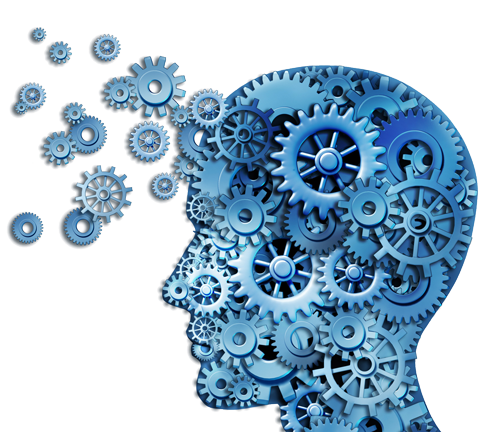Machine Learning
Intro about Machine learning
Machine learning is closely linked to computational stats that also focus on making the predictions by using the computers. It has powerful ties to the mathematical optimizations that deliver, the method, theory and app domain to the field. Machine learning process is identical to data mining process. Both the systems search via data to look for the patterns. Machine learning utilizes such data for identifying patterns in the data and making adjustments in program-actions accordingly. There are n numbers of Machine Learning Development Companies that can help you in machine learning from scratch. It helps in analyzing the large chunks of enormous data along with easing the work of data scientists. In fact, it can be said that machine learning has changed the face of data extraction and interpretation.

Need of Machine Learning
Supervised Algorithms
This algorithm comprises of outcome/target variable which is to be predicted from a provided predictors-sets (independent variables). By using such variables-sets a function can be generated that map inputs to the preferred outputs. Process of training goes on until the model achieves the targeted accuracy level on training data.
Unsupervised Algorithm
There is no any outcome or target variable to estimate/predict. It is utilized for clustering the population in different sorts of groups. This algorithm is highly used for categorizing the customers in various groups for particular intervention. K-Means and Apriori algorithm are some of the examples of Unsupervised Algorithm.
Benefits of Machine Learning

Learning of Feature- A system at random initialized and trained on few databases will finally learn the representation of good feature for a given task. In modern days, machine learning is utilized for discovering the relevant features in disordered datasets. Such features can be extremely helpful for the activities like image classification, speech recognition, face recognition, and face detection etc. Optimization of Parameter- It is identical to feature learning. Machine learning most of the times employs gradient method for optimizing parameters’ large array. For instance, a neural architecture may have billions tunable parameters.
- Multiple Iterations
- Feature of self modification
- Smart pattern recognition
- Intelligent, relevant, and proficient decision making
Tensorflow
Machine learning frameworks
It is an open source library created by industry legend Google for its research and production needs. In technical terms, it is used to meet the requirements for the system capable to build and train neural networks for detecting and deciphering patterns and correlations, and analogues to reasoning and learning. It was released on 9th November 2015 as open source software. TensorFLow is the second-generation machine learning system of Google Brain. It can run on multiple GPUs and CPUs. It is available on iOS, Android, macOS, and 64-bit Linux. In simple language TensorFlow is Python Library for rapid numeric computing made and released by Google. The API is technically for Python Programming language. Plenty of Tensor flow development companies are ready to serve you with their precise solutions.
Algorithms in Tensor Flow
Before getting into the machine learning algorithm, it will be good for you to expand your knowledge about using the tools correctly. Suppose you are writing Python code without a useful computing library, how it will feel like? It will be like using a smartphone without internet connection. You also install a robust and eminent library named NumPy by installing the TensorFlow library that helps in doing mathematical operation in Python. Machine learning algorithms need great amount of mathematical operations. Initially you need to ensure everything is in right order. Create a new file named test.py for first piece of code. You can import TensorFlow by downloading below mentioned script. Import tensorflow as tf. Such import will prepare TensorFlow for bidding. If there is no interruption by Python interpreter, then you are all set to use the TensorFlow. You may have difficulty at this stage due to an error i.e. library fails to search for the CUDA drivers if you install the GPU version. Therefore, you should know if you compiled library with CUDA, then it is essential for you to update environment variables with the CUDA path.
Apache Spark MLlib
Apache Spark requires a distributed storage system and a cluster manager. Spark supports Apache Mesos, Hadoop YARN, and standalone for cluster management. Spark may interface with an immense variety for -distributed storage. Such variety consists of Kudu, Amazon S3, OpenStack Swift, Cassandra, MapR File System, and Hadoop distributed File System etc.
MLlib carries plenty of algorithms and utilities
- Gradient-boosted trees, random forests, and decision trees
- Sequential pattern mining, association rules, frequent item-sets
- Latent Dirichlet Allocation (LDA) in Topic Modelling
- Gaussian Mixtures, K-Means in Clustering
- Alternating Least squares in Recommendation
- Naïve Bayes, logistic regression in Classification
- Survival regression, generalized linear regression etc. in Regression
- Loading and saving of pipelines and models
- Hyper parameter tuning and model evaluation
- Construction of ML pipeline
- Feature transformations like hashing, normalization, and standardization etc.
- Hypothesis testing, summary statistics, distributed linear algebra such as PCA, SVD etc.
Apache Spark Machine Learning
Classification
It refers to supervised ML (Machine Learning) algorithms that elect the input as belonging to one of several pre-defined classes. Classification data is enriched with labelled data such as non-fraud/fraud, or non-spam/spam etc. ML assigns a new class or label to new data.
Clustering
Algorithm groups the objects into different categories after analysing resemblances between the input examples. Unsupervised algorithms are used in Clustering, unsupervised algorithms are such which don’t have output in advance.
Collaborative Filtering
CF algorithms recommend items as per the preference information from different users. Approach of Collaborative Filtering relies on similarity i.e. users who like identical items in the past will like the identical items in future as well. It is a standard component of Spark provides machine learning primitives on the top of Spark.
Apache Singa

Software of Singa has three main components i.e. Model, IO, and Core. The component named Core is concerned with the tensor operations and memory management. IO carries the classes for to read and write the data to disc and the network. Model carries the algorithms and data structures for machine learning models.
- Benchmarking with the larger models and datasets
- Loaded with the tensor abstraction to support more proficient machine learning models
- Singa can be extremely helpful in improving the performance of any system. It can provide the below mentioned assistance
- Improving the efficiency and scalability of a system by using multi-threading for one-node computation and infiniband for the network communication
- Addition of more built-in models for deep learning. Users can directly train the built-in models on datasets.
- Premium performing Python binding and loaded with more effective deep learning models such as ResNet and VGG.
WHY ISTUDIO

11+ YEARS OF EXPERIENCE

500+ CLIENTS

WORLD CLASS SOLUTIONS

TEAM STRENGTH
Microsoft Azure ML Studio
Microsoft Azure Machine Learning (ML) Studio is collaborative drag-and-drop tool used for building, testing, and deploying solutions for predictive analysis on data. ML Studio publishes the models as the web services that can be utilized easily custom applications or the BI tools like Excel. ML Studio can be considered as a destination where cloud resources, predictive analytics, data science and your data meet. Microsoft Azure ML helps in quickly creating and deploying predictive models as the analytics solutions. You can utilize the ready-to-use algorithms library.
Contents of Azure Machine Learning
Projects
Collection of notebooks epresenting single project
Settings
Types of settings helpful in configuring account
Datasets
The uploaded datasets in Studio
Notebooks
Jupyter Notebooks created by you
Web Services
Services deployed from experiments
Experiments
Experiment created by you
Contents of Azure Machine Learning
- Sample
- Partition
- Feature engineering
- Score
- Numerical data
- Classification
- Regression
- Model
- Categorical Data
- Prediction
- Module
- Algorithm


